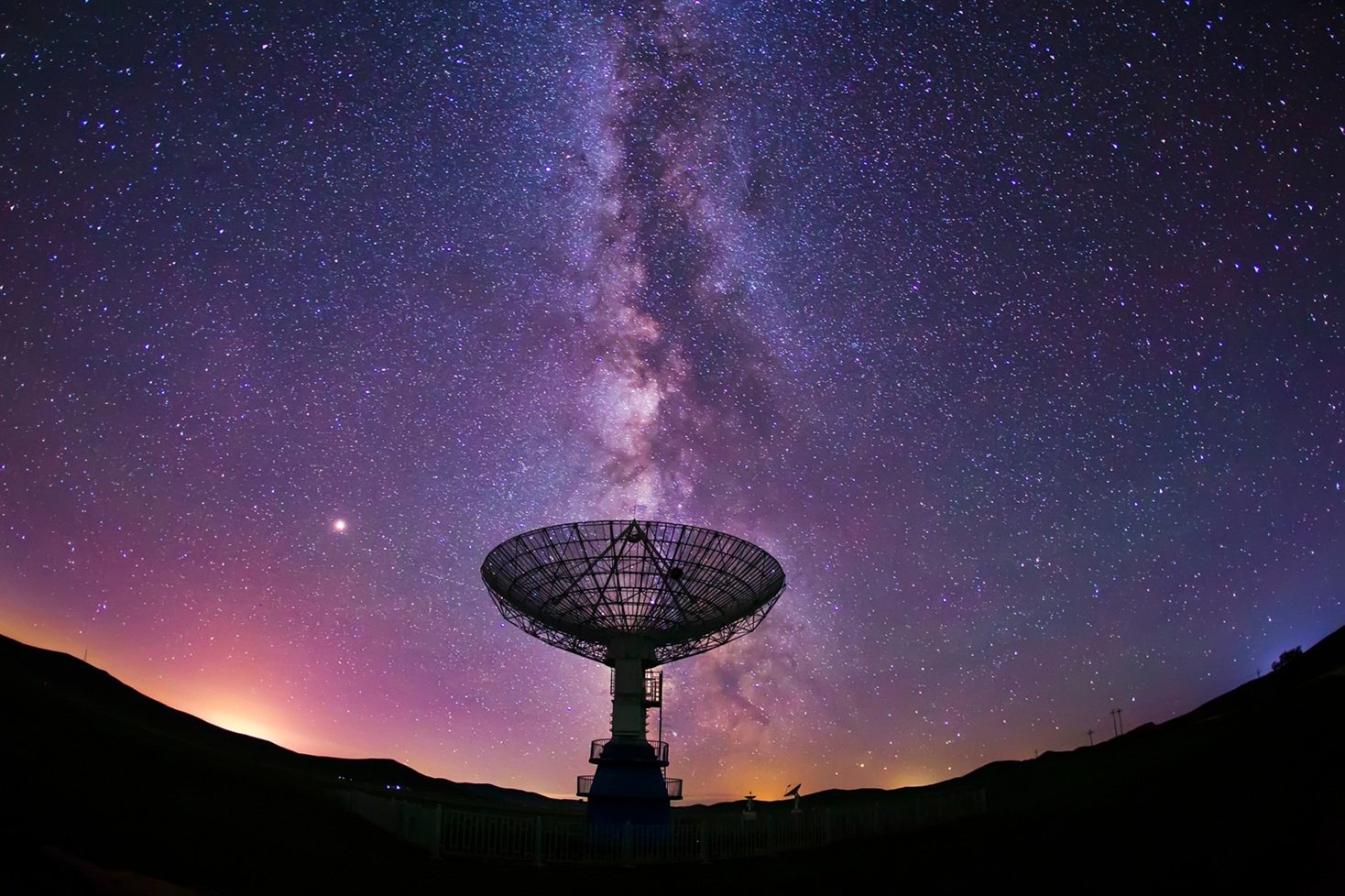By Mark Gallaway - University of Hertfordshire
It has happened to most of us: walking home late at night under clear skies you catch a glimpse of something bright moving, often from the corner of your eye. You turn to see what it is but it’s gone without a trace. And chances are you will have seen a meteor ending its multi-billion year journey in a burst of light 100km up.
Blink and you’ll miss it – until the next one. - Image Credit: Jasmine_K via Shutterstock
We can see meteors in the night sky all year round, but at certain times of the year we get spectacular shows. Most meteors start their lives trapped in icy comets. Comets are the gritter lorries of the Solar System. When they come close to the sun at about the orbit of Mars, the sunlight begins to melt the comet. As it melts, it frees trapped bits of grit, which follow the comet around the sun in a lazy ellipse until the Earth passes through the trail left by the comet and these little 0.1mm pieces of grit become – for a brief few seconds – a fiery meteor. It is these trails that form the bursts of meteoric activity known as showers that last a few days as the Earth moves through the celestial gritter lorry’s path.
Many meteor showers are named after the point of the sky the meteors appear to come from – the radiant point – so showers that seem to come from the constellation of Gemini are called Geminids, and the Perseids appear to come from the constellation of Perseus and so on. The showers appear that the same time every year as the Earth cross the orbit of the associated comet
The number of meteors we see per hour depends on many factors. A bright moon will drown them out, if the associated comet has been around the sun recently, the trail of grit will have been refreshed as new grit appears and so we will see more meteors. Also, the time of night is important. After midnight the rotation of the Earth faces the observer increasingly into the stream of the meteor shower until we get to 6am when we are effectively right behind the comet gritter lorry and we get hit by more grit.
The Plough or Big Dipper within the constellation of Ursa Major. - Image Credit: SAE1962/Wikipedia, CC BY-SA
For those thinking of venturing out to see nature’s own firework display try to find a site that has clear skies and little or no light pollution, far from a city or a town. Take a chair – old-fashioned deckchairs work a treat as they let you look up without cricking your neck. Be prepared to stay out well after midnight and do not forget to wrap up warm, take a hot drink, a red light torch (to preserve your night vision) and some company. You are unlikely to see anything for the first 20 minutes or so as your eyes adjust to the darkness – but slowly, maybe out of the corner of your eye first, the meteors will become visible.
Meteor shower seasons
The Plough or Big Dipper within the constellation of Ursa Major. SAE1962/Wikipedia, CC BY-SA
The meteors hunter’s year begins early with the Quadrantids between December 28 and January 7. The radiant point appears to come just north-east of the Plough (also known as the Big Dipper). The Quadrantids have a very short peak, indicating that the trail is quite compact compared to other showers. It does also have a very variable rate with peak hourly rates of more than 100 being observed some years.
Image Credit: Brian Spencer via Shutterstock
Most of the spring is poor viewing for meteor hunters. Just two main showers, the Lyrids between April 16-25 and Eta Aquarids between April 19 and May 28 put on any show – and not much of one at that. It isn’t until August that the season gets underway with the Perseids, the first meteor shower I saw as a child and still my favourite. With a peak on August 13, but extending several weeks either side, the warm clear summer evening makes spotting the Perseids a pleasurable experience. Hour rates of more than 100 are common and much higher rates have been seen.
Two months later, around October 20-22, we are treated to the Orionids. Linked to the famous Halley’s comet, the Orionids are not as common as the Perseids, with an hourly rate of only about 20. But the presence of the winter constellation of Orion makes it worth watching, especially if you have brought a small telescope to see the wonder of the Orion Nebula.
November starts with the Taurids. Associated with comet Encke, the Taurids have a relatively low hourly rate, about ten to 15 an hour, but unlike other showers, it appears that the meteors are larger than average, more like pebbles than grit resulting in very bright trails know as fireballs, which are sometimes coloured.
A few weeks later the Leonids arrive, peaking around November 17-18. Recently hourly rates have been quite low for the Leonids, at around ten to 20 but occasionally they jump up and showers of 1,000 per hour even 100,000 an hour on rare occasions. As it is difficult to tell when these leaps will occur again, so it is worth keeping an eye on them.
The year ends with the last big shower, the Geminids. One of the most popular with amateur astronomers as the dark, crisp, clear nights lend themselves to meteor watching. The Geminids peak about December 13-14 with a rate of about 200 per hour – a rate that appears to increase every year.
Source: The Conversation
If you enjoy our selection of content please consider following Universal-Sci on social media:










